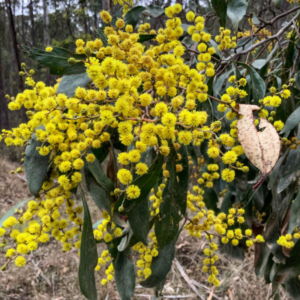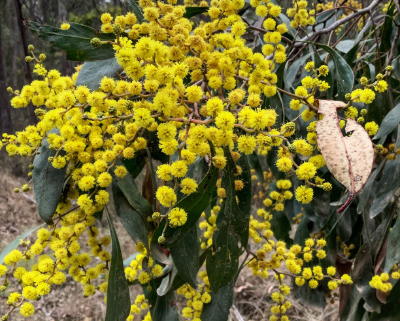Happy gardening new year!
 by Mark Evans
by Mark Evans
Whether you subscribe to the meteorological view that spring begins on the first day of September or to the astronomical view that it starts with the equinox on 2 September, this month marks the season that many consider the beginning of the gardening year.
The word ‘spring’ has a rich etymological history. In English, it comes from the Old English springan, meaning ‘to leap, burst forth, or grow’. The French call it printemps, from primum tempus (‘first time’), while Spanish and Italian use primavera, meaning ‘prime time’ or ‘first green’. In German the term is Frühling, from Middle High German vrüelinge (‘early time’), while Dutch uses lente, from Old Dutch lentīn, relating to the ‘lengthening’ of days. Slavic languages tie spring to warmth and vitality, using the word vesna, also the name of the mythical goddess of spring, youth and fertility. The Polish wiosna shares this root.
 Beyond Europe the names are just as expressive. In Mandarin Chinese, ( chūntiān, ‘spring sky/day’) uses chūn to evoke life and vitality, rooted in ancient agricultural cycles. Japanese haru ( ) adopts the same character, symbolising blossoming and mildness. In Arabic, Ar-Rabee links to growth and pasturage, reflecting fertility in arid regions, and the Islamic lunar calendar names their third month Rabi’ al-Awwal ‘the first spring’.
Beyond Europe the names are just as expressive. In Mandarin Chinese, ( chūntiān, ‘spring sky/day’) uses chūn to evoke life and vitality, rooted in ancient agricultural cycles. Japanese haru ( ) adopts the same character, symbolising blossoming and mildness. In Arabic, Ar-Rabee links to growth and pasturage, reflecting fertility in arid regions, and the Islamic lunar calendar names their third month Rabi’ al-Awwal ‘the first spring’.
Taken together, these names show how people everywhere respond to the same seasonal shift. Whether the emphasis is on growth, light or vitality, the language of spring reflects a shared human recognition of nature’s renewal. However different the words may sound, they all point to the same moment in the year when life begins again.
 Around the town gardens, spring is yet to make its full splash, though some of the Prunus species (cherries, plums, etc.) are beginning to flower, as are deciduous magnolias and Jasminum polyanthum (jasmine). Loropetalum chinense (Chinese fringe flower) is bright with clusters of spidery pink blooms, while the leathery-leaved, white-flowered Rhaphiolepis indica (Indian hawthorn) is also in flower.
Around the town gardens, spring is yet to make its full splash, though some of the Prunus species (cherries, plums, etc.) are beginning to flower, as are deciduous magnolias and Jasminum polyanthum (jasmine). Loropetalum chinense (Chinese fringe flower) is bright with clusters of spidery pink blooms, while the leathery-leaved, white-flowered Rhaphiolepis indica (Indian hawthorn) is also in flower.
In the vegie patch, September is perfect for planting root crops such as beetroot, carrots and swedes, along with celery. If you’re feeling adventurous, you can start capsicum, chilli, eggplant and tomato seeds, provided you keep them warm under a cold frame or on a heated pad and bring them inside at night. Otherwise, continue planting onions, peas, potatoes and silverbeet, and be ready for October, when the soil will suit most summer favourites.
With 1 September being National Wattle Day, the roadsides and bushland around the Triangle are brightening with golden blooms. Several acacia species are flowering, including the locally endemic Acacia pedina (Bermagui golden wattle), first described in 1999. This highly restricted species is currently putting on a show in nearby State Forests and Nature Reserves. You may also notice delicate white drapes in smaller trees which will be either the cross-shaped flowers of Clematis glycinoides (headache vine) or else the bell-shaped tubular blooms of Pandorea pandorana (wonga wonga vine). A closer look will tell them apart.
 We apologise for having missed some of your emails. They’ve all been answered now and we’re back on track. If you have gardening comments, questions, or plant or pest identification problems, please email gardening@thetriangle.org.au and we’ll get back to you personally.
We apologise for having missed some of your emails. They’ve all been answered now and we’re back on track. If you have gardening comments, questions, or plant or pest identification problems, please email gardening@thetriangle.org.au and we’ll get back to you personally.
Happy growing.
Photos (top to bottom)
Acacia pedina (Bermagui golden wattle)
Clematis glycinoides (headache vine)
Loropetalum chinense (Chinese fringe flower)
Pandorea pandorana (wonga wonga vine)


